More than 81,000 builders, remodelers, developers and other home building professionals filled the exhibit halls of the Las Vegas Convention Center as the National Association of Home Builders (NAHB) hosted the 81st NAHB International Builders’ Show® (IBS), the largest annual light construction show in the world, Feb. 25-27. This marks the largest show in 17 Read more
National Kitchen & Bath Association

More than 81,000 builders, remodelers, developers and other home building professionals filled the exhibit halls of the Las Vegas Convention Center as the National Association of Home Builders (NAHB) hosted the 81st NAHB International Builders’ Show® (IBS), the largest annual light construction show in the world, Feb. 25-27. This marks the largest show in 17 years.
Attendees visited more than 1,800 exhibitors – including 750 new exhibitors – over 728,000 net square feet, exploring innovative building products and technology to advance the industry and enhance new homes.
“This year’s show surpassed our high expectations for attendance, exhibit space and educational opportunities,” said NAHB Chief Revenue Officer Geoff Cassidy. “Attendees saw the latest trends in home technology and resilience, and the latest advancements in building techniques.”

“There are a lot more people here this year, and they really did a good job of organizing like-vendors together to make it easier to check out the same kind of products,” said Josh Deal, a home builder at JNJ Enterprises in McKinney, Texas.
“Traffic has been incredible. We’re having great conversations, and everyone’s been super engaged,” noted Sarah Caperton, director of siding innovation and commercialization at LP Building Products.
DCW 2025 By-the-Numbers
- Over 124,000 DCW registered visitors
- More than 2,500 exhibitors
- Over 1.2 million net square feet of exhibit space
KBIS 2025 By-the-Numbers
- Over 43,000 KBIS registered visitors
- Nearly 700 KBIS exhibitors
- More than 500,000 net square feet of exhibit space
- Over 150 first-time exhibitors
- Nearly 270 international exhibitors
This year also marked the 12th anniversary of Design & Construction Week® (DCW), the co-location of IBS and the National Kitchen & Bath Association’s Kitchen & Bath Industry Show. DCW drew over 124,000 attendees, and nearly 2,500 exhibitors occupied over 1.2 million net square feet of indoor and outdoor exhibits.
IBS attendees enhanced their industry knowledge by attending any of more than 120 education sessions led by experts on a wide range of industry topics, including artificial intelligence, building technology, research and trends. Two demo zones featured live demonstrations of trending topics in residential construction, allowing building professionals to learn best practices for building more durable, efficient, higher-quality homes.
Attendees also took advantage of numerous networking events throughout the week and visited The New American Home™ that showcased cutting-edge building techniques, high-performance design, and the latest products and trends.
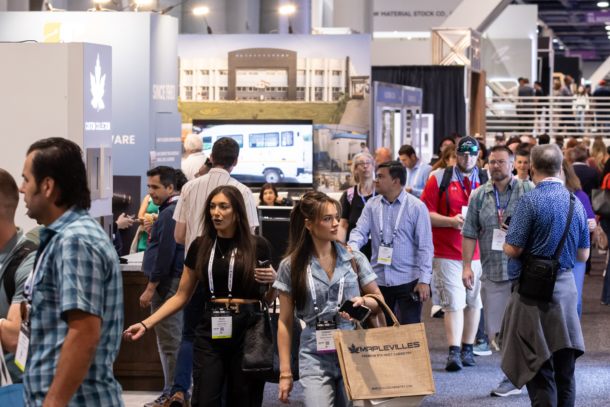
“There was so much to see and do, but the education was especially valuable. Each session had several really good nuggets of information that you can take and apply to different markets,” said first-time IBS attendee Ryan Darmetko, sales manager at Eastwood Homes in Charlotte, N.C. “We knew the show was going to be big and busy, but it was all very well organized and 100% worth the investment of coming.”
Next year, DCW will take place in Orlando, Feb. 17-19. Learn more about the show at www.BuildersShow.com.
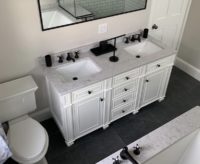
Kitchen and Bath business projected to contract but still projected to be 16 percent higher than 2021 The National Kitchen & Bath Association (NKBA)– the world’s leading association for the kitchen and bath industry has released its midyear 2022 Kitchen & Bath Market Outlook. While both inflation and mortgage rate increases have impacted the segment, the overall Read more
Kitchen and Bath business projected to contract but still projected to be 16 percent higher than 2021
The National Kitchen & Bath Association (NKBA)– the world’s leading association for the kitchen and bath industry has released its midyear 2022 Kitchen & Bath Market Outlook. While both inflation and mortgage rate increases have impacted the segment, the overall annual forecast still represents a double-digit increase over 2021.
“This new Market Outlook report provides revised market size estimates and 2022 forecasts in the Kitchen and Bath Industry, as well as gauges the economic and housing market shifts that continue to impact our market,” said Bill Darcy, CEO of the National Kitchen & Bath Association (NKBA). “Despite some economic headwinds, kitchen and bath remodeling demand remains strong. Residential kitchen and bath spending is anticipated to grow by 16% to $189 billion in 2022.”

NKBA’s 2022 Kitchen and Bath Market Outlook Midyear Report Top Takeaway
- Resilient Revenues. Full-year kitchen and bath spending is expected to reach $189 billion, 16 percent higher than 2021, yet $10 billion lower than the initial 2022 forecast.
- New Construction Strength. New construction is projected to represent over 60 percent of industry revenues, driven by a record number of new home builds. The report forecasts 21 percent YOY new construction growth, unchanged from the initial report in January.
- Larger Projects Gaining Momentum. Higher-end activity has been revised upward due to rapid home appreciation and client movement on deferred projects. With upwards of 20 percent gains, mid-range projects are expected to register the biggest YOY increases based on growth in new construction. Lower-end work projection has been sharply scaled back due to higher inflation causing many to put their projects on hold.
- Numerous Remodel Drivers. Nearly three in four homeowners are locked into mortgage rates below 4 percent, making it more cost-effective to remodel than to move. This, along with record-high homeowner equity per household and a high number of homes in prime remodeling years, bodes well for the second half of 2022.
- Normalization of Housing Starts/Completions. While builders are working through the substantial backlog of homes in various stages of completion, the number of new housing starts are falling due to high mortgage rates and home prices. This combination has led to a shrinking gap between home starts and completions.
- Recession Concerns. The Fed has tried to control inflation with three interest rate hikes this year, the latest in June. Of note: The last three times the Fed initiated a cycle of rate hikes, a recession ensued within a year.
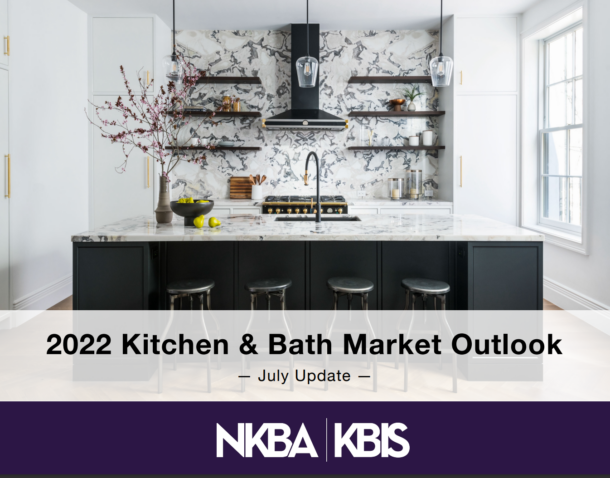
“We anticipate moderate declines in kitchen and bath spending in the event of a recession next year,” said Darcy. “Our view is informed by improved housing and consumer fundamentals and a likely less severe recession, relative to recent history if one were to occur.”
To learn more about the key findings and to access the full 2022 Kitchen & Bath Market Outlook: July Update, contact Brittany Loeffler at bloeffler@whitegood.com.
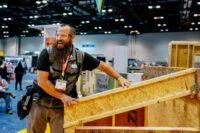
Three of the leading trade shows will take place at the same time in 2023, furthering the offering of what attendees can see next year. The National Hardware Show® (NHS), NAHB International Builders’ Show® (IBS) and NKBA’s Kitchen & Bath Industry Show® (KBIS) will take place during Design & Construction Week®, which will be held Read more
Three of the leading trade shows will take place at the same time in 2023, furthering the offering of what attendees can see next year. The National Hardware Show® (NHS), NAHB International Builders’ Show® (IBS) and NKBA’s Kitchen & Bath Industry Show® (KBIS) will take place during Design & Construction Week®, which will be held in Las Vegas, Jan. 31-Feb. 2.
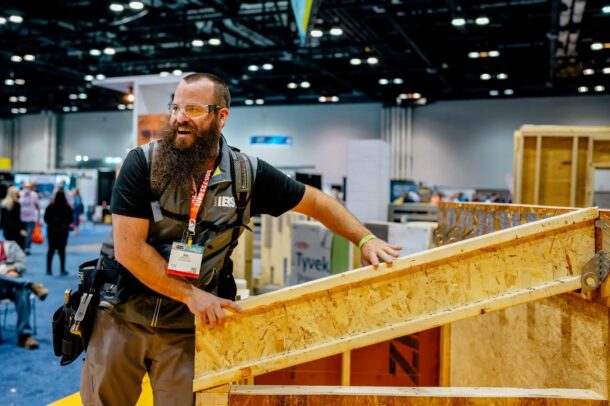
“We are absolutely thrilled that the National Hardware Show (NHS) will be in Las Vegas during the same time that Design & Construction Week takes place,” said NAHB CEO Jerry Howard. “NHS creates synergy with the International Builders’ Show and NKBA’s Kitchen and Bath Show. Co-locating NHS with IBS and KBIS will allow attendees to explore additional products and opportunities to grow their businesses and maintain a competitive edge in the market.”
“We think having the National Hardware Show co-locate with us in Las Vegas next year is a great opportunity to expand Design & Construction Week,” said Bill Darcy, CEO for the National Kitchen & Bath Association. “It gives Design & Construction Week attendees more products and services to experience during their three days at the show. It’s also a great way for all three associations to better serve their respective members as we look to the future.”
“Our customers benefit from more value and opportunity during their time in Las Vegas by aligning with two other industry leading events. NHS, IBS and KBIS events have complementary product offerings that will broaden buying and selling opportunities,” said Beth Casson, National Hardware Show® Event Vice President. “NHS is the destination for uncovering trends, and sourcing new products and suppliers. By hosting the show earlier in the year, this gives buyers an opportunity to kick off the year with discovery and connection, while allowing more time for critical decisions before big buying events.”
Learn more about each of shows:

Growth bolstered by an increase in price points despite material shortages and higher labor costs The National Kitchen & Bath Association (NKBA) – the world’s leading non-profit trade association for the kitchen and bath industry providing tools, research, certification, and events to thousands of professionals – has released its Kitchen & Bath Market Index (KBMI) for Q1 Read more
Growth bolstered by an increase in price points despite material shortages and higher labor costs
The National Kitchen & Bath Association (NKBA) – the world’s leading non-profit trade association for the kitchen and bath industry providing tools, research, certification, and events to thousands of professionals – has released its Kitchen & Bath Market Index (KBMI) for Q1 of 2022. The quarterly report, which is aimed at measuring the health of the kitchen and bath industry, found that the industry enjoyed a successful opening quarter of the year, growing 12.6% in Q1, with industry professionals expecting further growth as the year continues.

“Despite a number of ongoing economic hardships, from material shortages to higher labor costs, we’re excited to see our industry continue to grow and be optimistic about the future,” said Bill Darcy, Chief Executive Officer, NKBA. “As the world shifts toward a new normal, we’ve seen the kitchen and bath industry continue to adapt to the times by evolving e-commerce practices, stocking up on available products, and turning toward historically underutilized brands to fulfill customer needs.”
While price points have continued to rise, demand for remodeling projects has stayed strong, enabling the industry to continue to grow in the new year. In the KBMI Q1 report, all kitchen and bath industry segments reported high single-digit sales growth year-over-year (YOY) except for manufacturers, who reported double-digit sales growth of 10.3%. Not only were sales numbers up compared to 2021, but quarter-over-quarter (QOQ) sales accelerated for all segments of the industry.
2022 full-year sales growth expectations have also increased after a successful first quarter, with professionals anticipating +15.1% growth for the year, up from the 9.4% reported just three months ago. In the latest KBMI report, the kitchen and bath industry rated future business conditions a 78.6 on a 100-point scale, displaying cautious optimism about the future of the industry. Rising interest rates and low resale inventory have been tailwinds for big remodeling projects as consumers leverage home equity and other discretionary income to ‘trade up in place.’ Despite additional inflationary pressures potentially pricing out some homeowners, the industry reported a healthy number of backlogged projects, allowing the sector to feel confident about the road ahead.
“From manufacturers and designers to contractors and retailers, the entire kitchen and bath industry has had to adjust to the ever-evolving times that we live in. Despite the ongoing headwinds and potential unknown challenges ahead, all signs currently suggest that 2022 will be another strong year for the industry,” continued Darcy.
Among the report’s key findings were:
- Material Shortages Cause Delays and Cancellations: As the ongoing worldwide material shortage continues, kitchen and bath industry professionals have reported serious delays to their projects. Forty-three percent (43%) of building and construction firms report most of their projects were behind schedule in Q1 2022. Firms have tried to get out ahead of projects by pre-ordering as often as they can, however, industry-wide backorders and shipping delays prevent them from maintaining timelines. A further consequence of these material delays has been client cancellations due to long timelines, as 46% of building and construction firms had clients cancel and/or postpone projects in Q1. While this is a slight improvement from Q4 2021’s 50% cancellation/postponement rate, the trend continues to be a concern for the industry moving forward.
- Luxury Products In Demand, Come With Longest Lead Times: The KBMI for Q1 2022 found that luxury products once again are the most popular category for consumers. However, these products also come with the longest wait times. An increasing number of industry professionals (55%) report differing lead times across luxury, mass market, and entry-level products/materials. Seventy-nine percent (79%) of those indicating a difference say lead times for luxury products/materials are the longest. Consumers choosing to move forward with big project remodels are often opting for high-end products, associating quality and durability with the higher price tag.
- Labor Remains Elusive and Expensive: Industry professionals reported labor availability as having a significant impact on their businesses and their ability to keep up with demand, rating the overall impact a 6.7 on a 10-point scale. Industry professionals continue struggling to find qualified labor, raising rates by 18% on average to retain and/or attract talent. Seventy-six percent (76%) of designers are increasing labor rates 21% on average to retain existing employees, saying competition for qualified labor is fierce.
To learn more, visit here.
